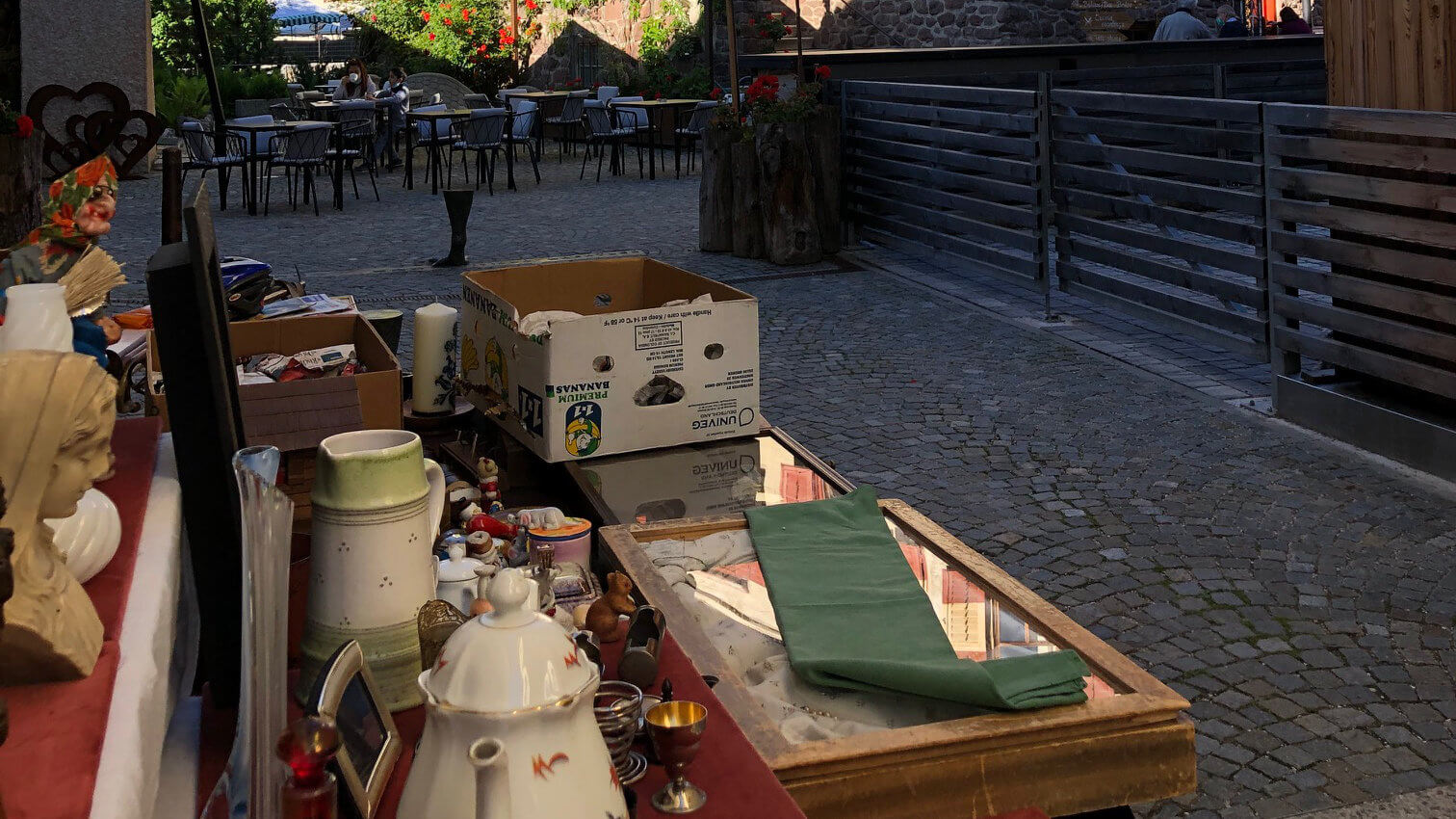
It will offer many possibilities to find unique and interesting treasures. The market includes a great variety of different antique items.
In the exploration of the Dolomites women like Marie Ogilvie Gordon, Mary Lyell or Charlotte Murchison were in no ways inferior to their male counterparts. However, only little is known about them. Amelie Edwards travelled to the Dolomites as early as 1870 and published excellent travel descriptions. Did you know that the Englishmen Gilbert and Churchill, name-givers to the Dolomites, were accompanied by their spouses, who provided excellent contributions? Or that Jeanne Immik was among the pioneers of rock climbing? In addition, women from Dolomite valleys made spectacular discoveries.
Everything to know about DoloMythos
Maria Gordon: an important fern and a great geologist
The fern genus Gordonopteris lorigae was first discovered by Michael Wachtler in the Prags Dolomites and named in honor of the Scottish scientist Marie Ogilvie Gordon Gordon (1864-1939). The species name is reminiscent of the Italian scientist Carmela Loriga Broglio (1929-2003), a great geologist in the Dolomites. In1893 Maria Gordon became the first British woman to graduate as a doctor of science and in 1900 – she had given birth to three children – she became the first woman to obtain her doctorate at the University of Munich. She was also active for women’s equality throughout her life and was a first member of the “International Council of Women”.
Charlotte Murchison, a ginkgo and a forgotten researcher
Ginkgoites murchinsonae, a 260 million year old ginkgo plant honors the English geologist and fossil collector Charlotte Murchison (born Hugonin; 1788-1869). She accompanied her husband Roderick Impey Murchison on his travels and made drawings. Several times she visited the Dolomites. Although she contributed significantly to his work, she was never able to appear as a co-author. Women were even forbidden to attend a high school at that time.
Mary Lyell-Horner, the unknown scientific Partner
The fir-ancestor Majonica lyellae, first described by Michael Wachtler from the Upper Permian in the Dolomites honors Mary Lyell née Horner (1808-1873), wife of the famous Charles Lyell. Although she was never mentioned, she was an excellent geologist who also researched in the Dolomites. The multilingual Mary (she spoke fluently French, German, Spanish and Swedish) accompanied her famous husband Charles on the excursions and supported him in his scientific research, although she was never mentioned.
Amelia Edwards, a bold travel writer
The Permian conifer species Ullmannia edwardsae honors the English writer, journalist and Egyptologist Amelia Edwards (1831-1892). In her book “Untrodden Peaks and Infrequent Valleys”, she described a journey with her companion Miss Lucy Renshaw (1833-1919) through the then little-known Dolomites.
Marie Stopes, an activist for women’s equality
Michael Wachtler first described the fern Nemejcopteris stopesae honoring the Scottish paleobotanist, author, women’s rights activist and pioneer in family planning Marie Stopes (1880-1958). She was the first and only woman among 500 men to obtain her doctorate in Munich in 1904. She then went to Japan to deepen her research.
Johanna Clement-Westerhof, a brilliant paleobotanist
With the description of the primitive conifer Majonica clement-westerhofae Michael Wachtler honored the Dutch paleobotanist Johanna A. Clement-Westerhof, who succeeded in describing the oldest known fir with its winged seeds from the Dolomites in1987. She also made significant discoveries in the ancestors of all modern Araucarias, the genus Ortiseia.
Two faithful travel companions
The two women Anna Churchill née Maitland-Laurie, artistic and musical talent, and SusanGilbert née Green (1809-1871), accompanied their husbands George Cheetham Churchill(1822-1906) and Josiah Gilbert (1814-1893) on several journeys through the Dolomites. The book “The Dolomite Mountains”, published in 1864 by the two naturalists, a summary of their travel experiences, gave the Dolomites its name. With the first description of the two Triassic araucaria precursors Araucarites gilbertae and Araucarites churchillae, Michael Wachtler wanted to help prevent them from falling into oblivion.
Edith Campei, a famous discovery
The Triassic lycopod Sigillcampeia honors Edith Campei from Val Badia, who first discovered this archaic plant. In this way, important contributions of those simple and modest people are honored, who wander through nature with their eyes open and thus carry out important researches.
Alexa Wachtler, the Dolomites as an open diary
During her mountain tours, Alexa Wachtler discovered a strange and hitherto unknown genus of clubmosses from the Triassic in the Dolomites. Eocyclotes alexawachtleri honors the food chemist Alexa Wachtler. All these spectacular finds prove that in the Dolomites there is a key to understanding the entire plant world.
From:
Michael Wachtler: Permian and Triassic Plants from the Dolomites